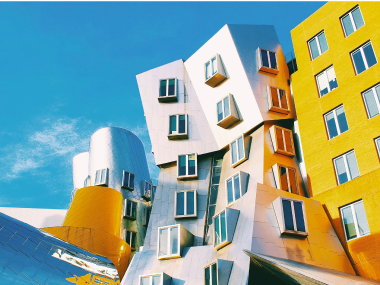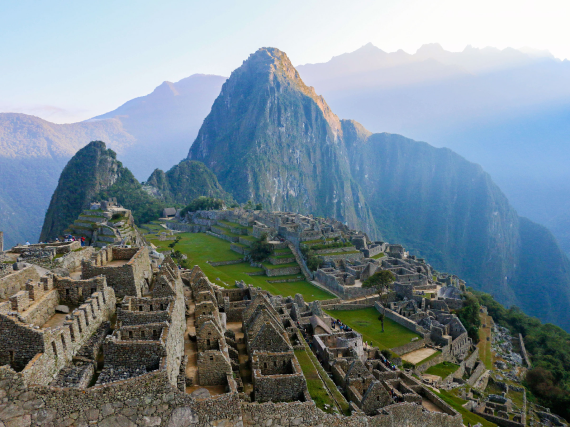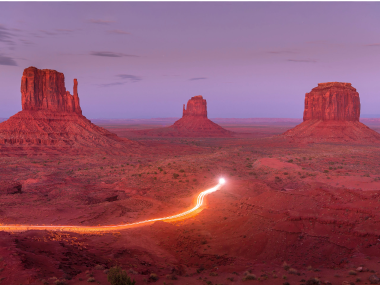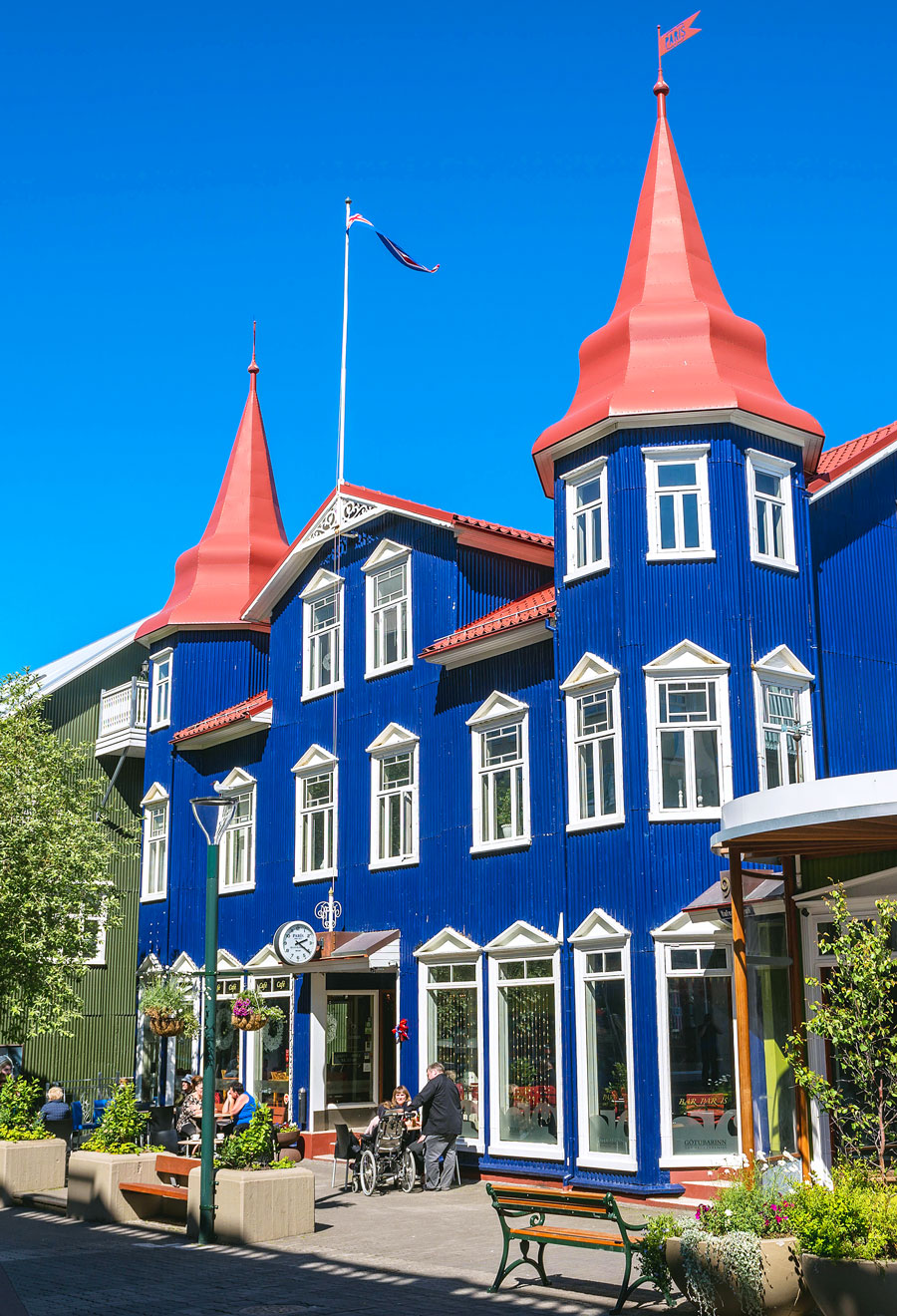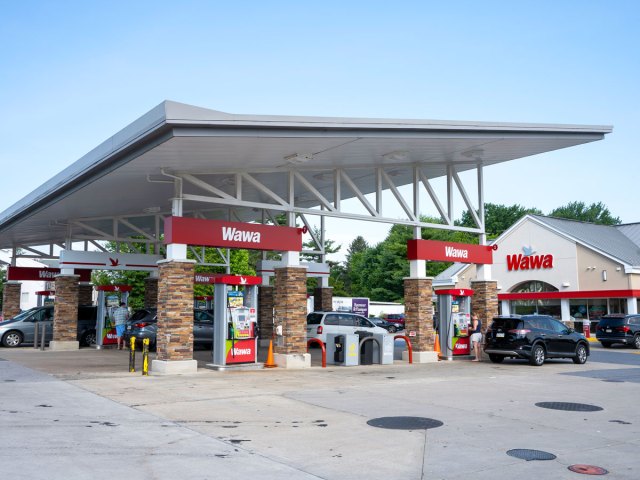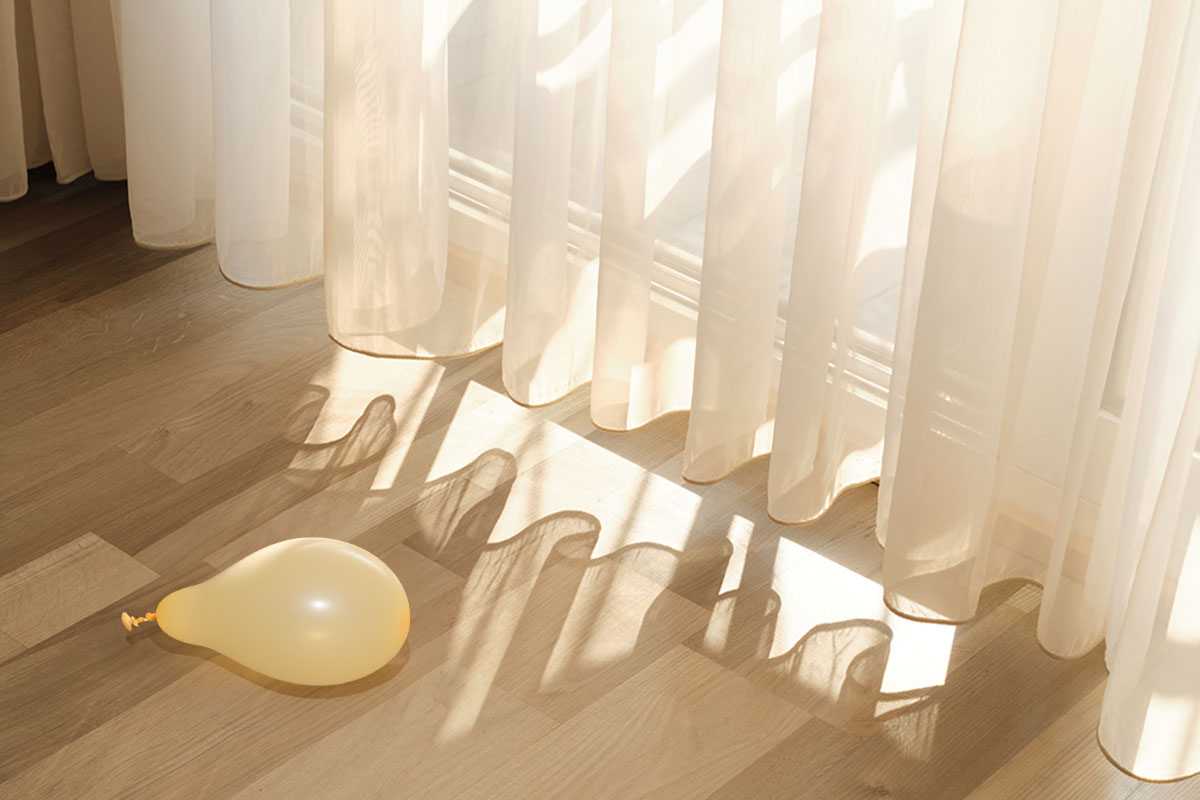Icelandic architecture provides a fascinating insight into the island nation’s cultural heritage, its isolated location in the mid-Atlantic, and even its famously challenging climate. As the availability of building materials changed over the centuries, so too did the primary method of construction in Iceland. Today, the country’s buildings reflect this diversity, but you may also notice many of them are painted in vibrant shades. Let’s take a look into the reasons why buildings in Iceland are colorful.
Iceland’s Turf Houses
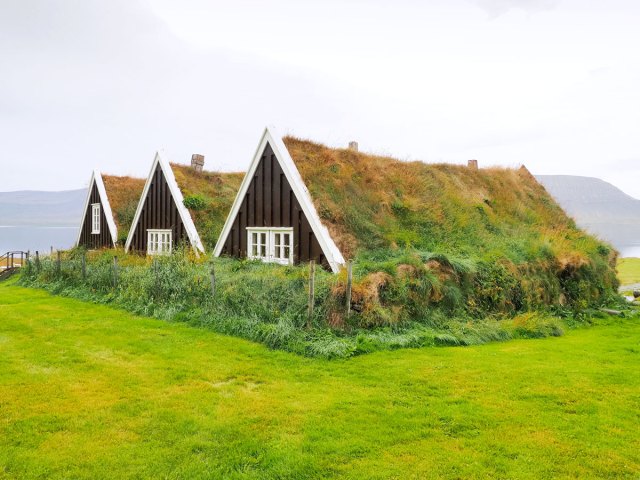
For much of Iceland’s settled history, its inhabitants had to make do with a limited selection of building materials. Though between 25% and 40% of the country was at one time covered with birch trees, demand soon outstripped supply, and deforestation was the unfortunate consequence. Timber for framing had to be used sparingly, while flat stones gathered locally provided the basis for the foundations.
In the ninth century, resourceful Norse settlers turned to mineral-based turf as a building material. Abundant and versatile, sod was cut and clad to the walls and roof of houses across the island. (Unfortunately, it was no match for the wind, damp, and cold.) Save for a few houses shipped over by wealthy foreign merchants, the color palette for much of Iceland’s architecture mirrored nature: grays, greens, and browns.
Changes in the 19th Century
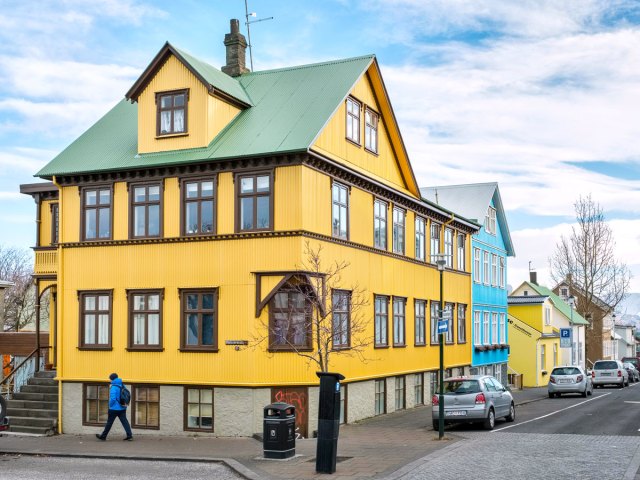
Toward the end of the 19th century, Icelanders started to import building materials such as corrugated iron, which was invented in England in the 1820s. Within a few decades, significant quantities were introduced to Iceland, as the British were keen to trade it for Icelandic sheep.
According to Drífa Kristín Þrastardóttir, Built Heritage project manager at the City Museum Reykjavik, cladding the timber frame with corrugated iron helped with weatherproofing, while painting it kept rust at bay. Additionally, lighter colors were once felt to be more aesthetically pleasing, particularly for houses on narrow, otherwise dark streets.
The bright cheerful colors that you now see splashed across buildings lining the country’s streets are indeed a welcome antidote to the long dark winters and overcast skies frequently seen in towns like Reykjavik.
Encouraging Tourism

Color has also been used as a tool to inspire tourism. In the easterly port of Seyðisfjörður, for instance, rainbow-hued stripes lead to a pastel blue church. In Siglufjörður, at the far north of the Tröllaskagi peninsula, bold shades make it easy to spot the Herring Era Museum, which tells the story of the port’s 20th-century heyday.
In Reykjavik, street art is commonplace, and many blank walls and otherwise drab alleyways have been given an injection of color through the murals that now adorn them. The subject matter is eclectic, referencing topics such as Icelandic nature and culture. Take a walking tour of the capital’s oldest neighborhoods, and you’ll encounter everything from puffins to comic book characters.
Where To See Colorful Icelandic Architecture
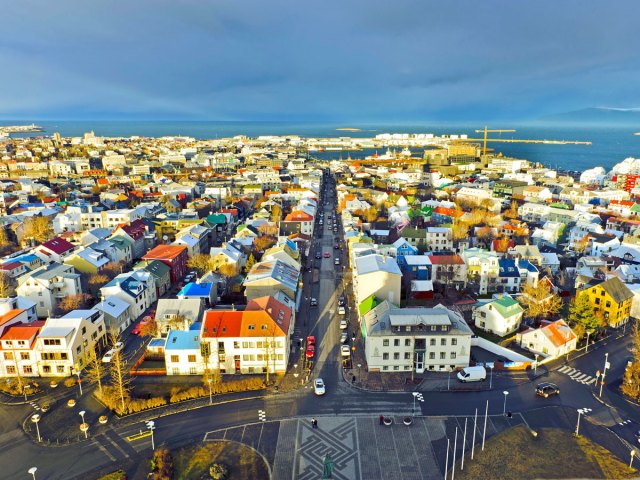
Reykjavik’s old town is perhaps the best place to find buildings clad in painted corrugated iron. Take in the scene from above by ascending the elevator to the viewing platform of Hallgrímskirkja, the largest church in Iceland. Afterward, check out streets such as Vesturgata, Frakkastígur, Hverfisgata, and Skólavörðustígur (aptly nicknamed Rainbow Street) to see well-preserved examples of Iceland’s colorful architecture.
In Akureyri, Iceland’s second-largest city, the architecture reflects the settlement’s Danish heritage. Head downtown to Hafnarstræti and take a stroll along Aðalstræti to find many fine examples of Akureyri’s historic building stock in an array of colors, such as the lovely green Leikfangahúsið, a popular toy museum.
North Iceland
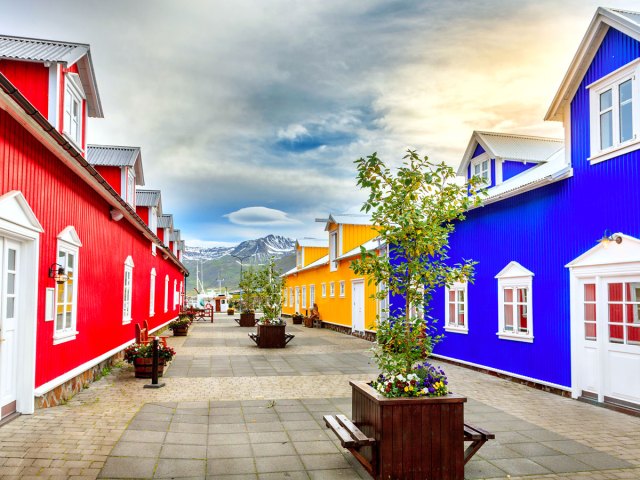
When Siglufjörður’s fishing industry went into decline, this small port in the far north of Iceland turned to tourism instead. Interest in Siglufjörður’ grew thanks to the Icelandic noir drama series Trapped, in which the city featured prominently. Here, you can admire heritage buildings along the waterfront on Gránugata that stand out with their red, blue, and yellow paintwork.
In Húsavik, many of the heritage buildings along the quayside are made of wood, but you don’t have to walk far to see some delightful painted structures. The shade chosen for the Hotel Húsavik, for instance, evokes a cloudless sky, while on the corner of Héðinsbraut and Hafnarvegur, a home built in 1903 presents an even deeper shade of blue.
West Iceland
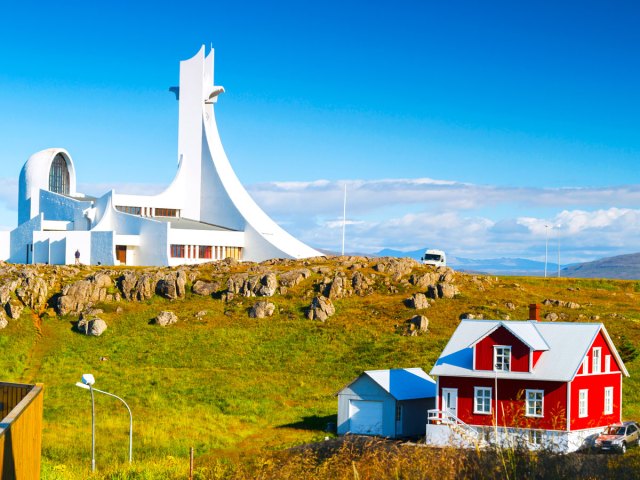
Stykkishólmur, a port on the northern coast of the country’s Snæfellsnes peninsula, also boasts plenty of historic — and yes, colorful — buildings. Though the regional museum is housed in the town’s oldest building, Norwegian House, which is painted black, there are a string of buildings painted in bold shades along Aðalgata, a neighboring street.
East Iceland
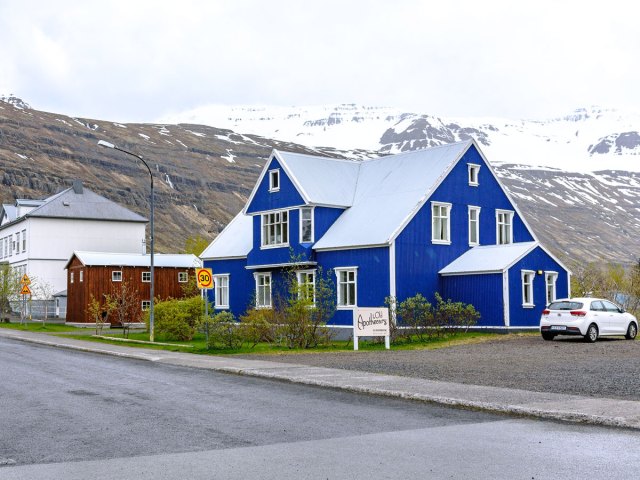
The buildings of Seyðisfjörður, meanwhile, crowd around the head of a fjord. Many of the port’s hotels and guesthouses are painted in primary colors, such as the blue Old Apothecary, the red Hafaldan Old Hospital, and the yellow harbour building. And the town’s famous church at the end of Seyðisfjörður’s rainbow path, is painted a pretty pastel blue that makes for a perfect photo op.
Featured image credit: Konrad Zelazowski/ Alamy Stock Photo
More from our network
Daily Passport is part of Inbox Studio, which publishes content that uplifts, informs, and inspires.
